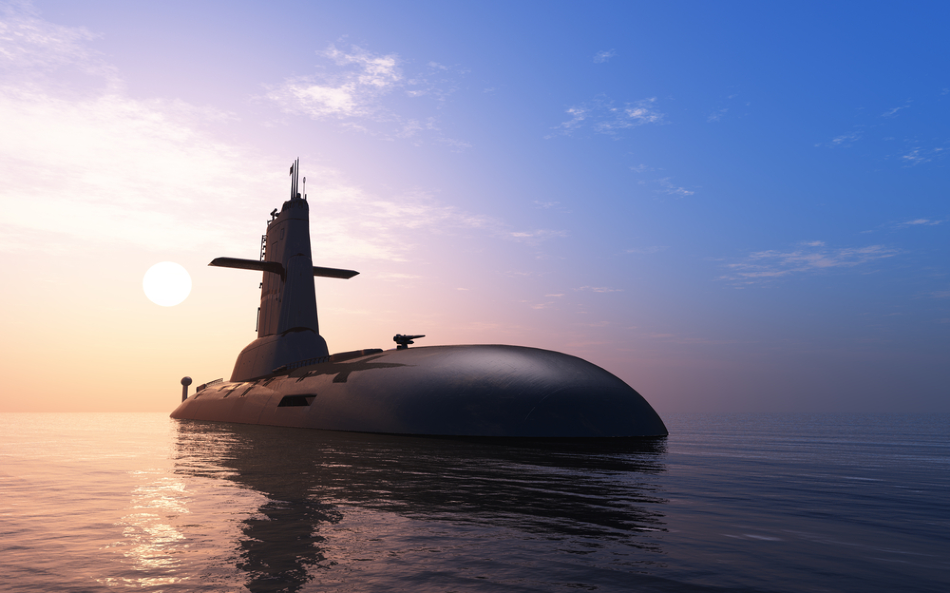
Image Credit: iurii/Shutterstock.com
Lithium-ion batteries have positioned themselves at the forefront of battery energy storage technology for many applications. This disruptive creation will shake up many industries, from consumer electronics to the energy, oil and gas sectors, to transport and the maritime industry.
For over a century, lead-acid batteries have been the standard source of stored energy for underwater vehicles such as submarines. They are utilized to power the vehicle’s main propulsion, or as a stand-by battery. However, more is required of submarines – they must demonstrate increased endurance and cope with greater speed demands. A new generation of energy storage technology is required, based on lithium-ion batteries (LIBs).
Old Versus New
Lithium-ion batteries could be a game-changer in underwater applications, with the potential to be a primary source of power not just for submarines, but unmanned underwater vehicles (UUVs) and torpedoes too. Although LIBs are already found in exercise torpedoes and some UUVs, the technology is maturing; it is still relatively new compared to lead-acid batteries, which have been in production since the late 19th century.
However, their compact design means LIBs are more efficient and have more excellent reliability than their lead-acid counterparts. They offer substantial enhancements over their predecessors; they have a higher energy density, a long service life, and require less maintenance.
LIBs work based on electrolysis; they have a lithium metal oxide cathode and a graphitic carbon anode with an electrolyte of lithium salts dissolved in organic carbonates sandwiched in between. When the battery is charging (i.e. taking in and storing energy), the lithium-based cathode releases some of its ions, which travel through the electrolyte to the anode, where they remain. The opposite happens when the battery is discharging, and this produces energy to power the battery.
Military and Civilian Uses of Lithium-Ion Batteries
LIBs are a promising technology for several civil and defense applications. Although less than 1% of the total demand for LIBs currently comes from the defense sector, this is expected to increase as their potential is realized.
“Even though there are some concerns with LIB, such as thermal runaway, fire and explosion risks, it is the fastest growing and most promising battery technology,” explains Captain Nurettin Sevi, previously of the Turkish Navy, and now Defense Analyst at GlobalData, a data analytics and consulting company.
“It has the potential to be one of the best sources of power for defense underwater applications because their compact designs bring higher efficiency and strengthen reliability for underwater applications.”
LIBs will make a real impact in submarines thanks to their long service life and low maintenance requirements. Big-name designers such as Spanish shipbuilder Navantia, high-tech naval defense company Naval Group, and Swedish defense company Saab Kockums have already designed LIBs for submarines.
The Japanese Navy employs the technology in the Sōryū-class submarine – a diesel-electric attack sub - and South Korea has utilized them for their next-generation attack submarines. The US Special Forces delivery vehicle – the Dry Combat Submersible (DCS) - and the Russian Surrogat unmanned mini-sub are both powered, or will be, by LIBs.
LIBs are also of value in civil maritime, namely in unmanned underwater vehicles (UUVs). Thyssen Krupp Marine Systems, a German defense company, intend to power their Modifiable Underwater Mothership (MUM), a modular underwater vehicle, which aims to ‘conquer the deep sea’, with LIBs. MUM will aid the transport and deployment of payloads, have applications in the offshore wind and oil and gas industries, as well as the ability to explore hard to reach areas, such as the Arctic ice regions.
Click here to find out more about different materials science equipment available on the market.
The Future of LIBs
Lithium-ion batteries are emerging as crucial for energy storage. They will have a decisive role in electric mobility, i.e., our ability to travel using electrically powered, rechargeable vehicles, whether on land or underwater. We have already seen that the evolution of LIB-powered electric vehicles has not only improved lithium-ion based technologies but also resulted in a steady decline in the prices of lithium-based batteries.
Lithium-ion batteries have the potential to change how energy is stored and used, but, as with any developing technology, there are still improvements that can be made. Introducing graphene – a single layer of carbon-based material – could transform how energy storage technology is used. The material can be used to create lightweight and durable batteries with a high capacity for energy storage and quick charging.
Researchers from the Samsung Advances Institute of Technology (SAIT) and Seoul National University’s School of Chemical and Biological Engineering designed a graphene coating for lithium-ion batteries that will increase their capacity by 45% and make their charging speed five times faster. The batteries will also last longer and can maintain temperatures approaching 60°C, making them ideal for electric cars; it remains to be seen if they can develop a version for underwater applications.
References and Further Reading
GlobalData (2020) Lithium-ion batteries are potential game-changer in underwater applications. GlobalData [Online] https://www.globaldata.com/lithium-ion-batteries-potential-game-changer-underwater-applications/ accessed 24th September 2020).
NavalTechnology (2020) Lithium-ion Batteries For Under Water Use: Technology Trends. NavalTechnology [Online] https://www.naval-technology.com/comment/lithium-ion-battery-technology/ (Accessed 24th September 2020).
Woodford C. (2019) Lithium-ion batteries. ExplainThatStuff [Online] https://www.explainthatstuff.com/how-lithium-ion-batteries-work.html accessed 24th September 2020
EDROnline (2020) thyssenkrupp Marine Systems presents new modular underwater vehicle: MUM project to set new standard for unmanned underwater operations. EDROnline [Online] https://www.edrmagazine.eu/thyssenkrupp-marine-systems-presents-new-modular-underwater-vehicle-mum-project-to-set-new-standard-for-unmanned-underwater-operations (Accessed 24th September 2020).
Graphene-info (2019) Graphene batteries: Introduction and Market News. Graphene-info [Online] https://www.graphene-info.com/graphene-batteries (Accessed 24th September 2020).
Disclaimer: The views expressed here are those of the author expressed in their private capacity and do not necessarily represent the views of AZoM.com Limited T/A AZoNetwork the owner and operator of this website. This disclaimer forms part of the Terms and conditions of use of this website.